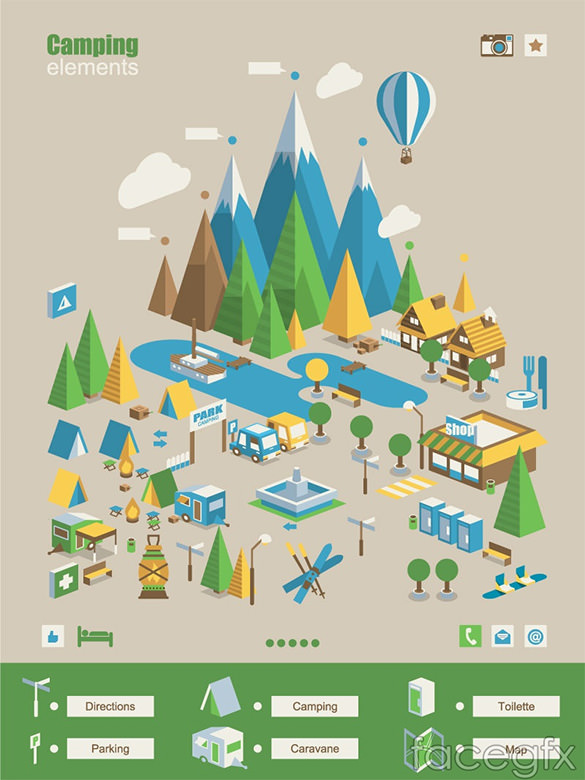How To Increase Revenue By Selling Camping Tents
How To Increase Revenue By Selling Camping Tents
Blog Article
Does Your Backpacking Tent Need a Footprint?
A footprint is costly and includes added weight to your knapsack. It also isn't particularly durable.
What is minimum Trail weight for a tent?
Inevitably, whether or not a camping tent footprint is needed relies on where and just how often you're camping. Generally, it's an excellent concept to use one if you camp on abrasive surfaces or in wet conditions.
Camping Tents with Reduced Deniers and Water-proof Scores
Camping tents with reduced deniers and water-proof rankings have a tendency to be lighter, yet they can additionally be extra breakable. They might call for even more constant fixings and have much less interior area than tougher designs. If you're a laid-back backpacker that suches as to take a trip rapid and light, this could be great; nonetheless, even more seasoned walkers recognize that compromising longevity can feature large repercussions down the path.
The denier and water resistant score of a tent's canopy, rainfly, and flooring can aid you identify its livability. Try to find higher-denier materials on the canopy and rainfly, as well as taped seams that aid stop water from leaking with stitches. Some manufacturers even make use of warmth and sealant during building to develop a more powerful joint; these are called bonded joints.
The livability of a camping tent can likewise be identified by its floor measurements and ability. A camping tent's floor need to be a little smaller than the footprint to prevent water from merging under the sanctuary.
Camping Tents in Rough Terrain
Numerous backpacking tents consist of a footprint developed specifically for their model, which aids make sure a proper fit and protects the outdoor tents's base from dampness and sharp items. Other manufacturers market universal footprints that can be reduced or folded to match a tent's measurements.
The sort of terrain you'll run into is one more important factor to consider for picking a camping tent. For instance, if you'll be camping in a canyon or gully, seek a sanctuary that can deal with solid winds. These problems create disturbance that can make the difference in between appreciating your campsite or enduring discomfort.
The capacity and optimal elevation of a tent offer you a great idea of its livability, yet additional variables to think about consist of vestibules (the section of the rainfly covering the doors) and total storage area. For example, throughout our winter season screening of the Marmot Tungsten, its generous 93-by-82-inch flooring quickly handled 4 sweaty backpackers and their puffier shoulder period resting bags while still leaving adequate room for equipment and individuals.
Camping Tents in Damp Issues
Even if your tent shows up dry, dampness lurks in the spaces and crannies. Over time, it can weaken the textile. That's why it's so important to capitalize on rest days to deep-clean your outdoor tents and its components, such as zipper linings, stake loops and flexible webbing straps.
Likewise, see to it to pitch your tent in a flat area, not a divot or concave area, so that ground water doesn't gather between the camping tent flooring and footprint or tarpaulin. And if you're using an impact, consider a custom-cut one created for your tent's floor plan. It will not collect rain the means a common ground cloth or tarp can.
Method establishing and taking down your outdoor tents at home before you took off, to get a feel for exactly how promptly and efficiently you can do it. Likewise, technique staking out your outdoor tents in different terrains to how to put up a tent see just how easy it is (or isn't) to do in bad weather.
Outdoors Tents in High-Rise Situations
Tents range in flooring dimension and livability. For instance, a huge tent with double doors and vestibules like Marmot's Tungsten can manage 4 backpackers without requiring acrobatics to enter and out or to store equipment.
The minimal trail weight spec is the very best spec to contrast versions, as it consists of the bare fundamentals: outdoor tents body, rainfly and poles. But keep in mind that the spec omits outdoor tents risks, man lines and things sacks.
Most backpacking tents can hold up to a light summer storm, but some can be swept away by gale-force gusts. Look for a model with solid poles, an elevated bathtub-style flooring and seam taping to decrease the opportunity of water permeating with. More expensive designs likewise have a tendency to include stronger materials that can withstand the effect of particles and various other forces.
Are Bell tents worth the money?
